
Wireframe design examples
Hundreds of creative, innovative, well designed wireframes ideas & examples.
We curate topical collections around design to inspire you in the design process.
This constantly-updated list featuring what find on the always-fresh Muzli inventory.
Last update: 7/6/2025


Free wireframe kit from InVision

How To Succeed In Wireframe Design
In this article, we will take a deeper look at one of the most simple yet quite often underrated activities in web development: the design of wireframes. You’ll learn what wireframes are, why we need to design them, how to get the most out of the designs, and how to take it to the next level.For the most part, we tend to underestimate things that are familiar to us. It is also very likely that we will underestimate those things that though new, seem very simple to process. And that is correct to some degree. But, when we are faced with complex cases and all measures are taken, a good and solid understanding of the basics could help us to find the right solutions.In this article, we will take a deeper look at one of the most simple, thus, quite often underrated activities in web development that is the design of wireframes. We will find out what are wireframes, why we need to design them, how to get the most out of the wireframes design, and how to take it to the next level.According to The Top 20 Reasons Startups Fail report by CB Insights, 17% of startups reported lack of user-friendliness as the reason for their failure. Designing a user-friendly interface is not a trivial task, especially for large and complex products where there are many entities, dependencies, and elements to be organized. To design such complex products you should follow a top-down approach and wireframes design is the best technique that could help you with that.First, Let’s Define TermsWireframe — also known as a page schematic or screen blueprint, and it is a visual guide that represents the skeletal framework of a website or an application.Additional definition we will look at is wireframing — a process of designing a wireframe, and commonly used to lay out content and functionality on a page which takes into account user needs and user journeys. Wireframes are used early in the development process to establish the basic structure of a page before visual design and content is added.At first glance, wireframing seems simple. And herein lies the major problem: that we tend not to pay enough attention to simple things. One way to help us get the most benefits from wireframing is to define the goals of the product or service.The main goal of wireframing, that we could get is to show the team and stakeholders which entities, pages, and components the application is going to have and how these elements of the digital product will interact with each other.From the goal definition we can see how big the impact of wireframing is for both the development process and the final product.When we keep in mind the goals of the wireframing process, we still need to pay attention to what are the common pitfalls to avoid during wireframes design.Wireframing Mistakes We Want To AvoidCreating wireframes for the sake of ‘box-checking’;Skipping wireframes stage at all;Preparing wireframes after the visual designs;Not understanding why to use wireframes.Wireframes should precede the stage of visual design, not vice versa. It’s like deciding on the technology stack for your application after having the code written.Wireframe design lays the foundation for the quality of the design, and the better we understand the goal of this phase the more benefits we could get. So let’s dive deeper and find out why we need to design wireframes and what values this technique brings.Businesses that lack knowledge of the product design may welcome the practice of skipping wireframe design as it allows them to cut the project costs, but this decision may lead to potential failure in the long run. And you, as the designer, should explain why we are doing it, how it will help the final product, and how it could even save future expenses.Next, let’s check some points that could help you better understand why we need wireframes and see how wireframes help to get feedback from your developers, clients and future users of your product.Why You Should Design WireframesHelp Your Team Estimate And Refine The Scope Of WorkWireframes allow designers to quickly create a visual representation of the future product and demonstrate it to the team for the needed revisions. Wireframes also help you show your team which screens the application is going to have, which elements and controls will be on each screen, and how all the elements will interact with each other. In addition, looking through wireframes is way faster than reading specifications. Also, it helps us avoid discrepancies in scope between the initial estimates and the final ones.Stages of software design & development life cycle where wireframes can be used in one form or another. Involve All Team Members In The Product Design Stage.Involve All Team Members In The Product Design StageWe all have been in the position of having created a top-notch design, only to be faced with development constraints. The use of wireframes allows us to involve developers in discussing designs at the early stages, enabling them to provide feedback and suggest changes before you start working on visual design. This way, you can speed up the design process and avoid wasting time and money.Hold A Demo For ClientsGetting rapid feedback from your clients and stakeholders is an important component of the design process. Also, we all have experienced multiple change-requests from our stakeholders and that is normal. With wireframes, we could make this process more efficient. Making changes to prototypes requires more time and effort than making changes to wireframes, it will let you be more agile and don’t waste extra time on rework.Carry Out User TestingAccording to Eric Ries, author of Lean Startup, the sooner you carry out user testing, the better — no one wants to roll out an application and find out that users don’t get how to use it right. Wireframes can help designers get valuable feedback from potential users and don’t spend time on developing complex interactive prototypes when they are not needed.The fact that UI/UX designers use wireframes does not necessarily mean that they do it right. For that, you should remember and follow the best practices.Wireframing Best PracticesTo bring the best results and serve a solid foundation for further UI, you need to follow several simple rules:1. Minimize The Use Of Color In WireframesIf you’re using rich color palettes in your wireframes, remind yourself of the goal of wireframing (to show which elements the product is going to have, and how they should interact with each other) and think if extra colors help you to achieve it.Minimize the use of color in wireframes, we will have dedicated phase for this.In some cases, they could. But in general, adding colors to your wireframes might distract the viewer’s attention and will surely make any updates more difficult. Moreover, there’s another important issue to consider — not all clients have a good understanding of UX techniques and might take colored wireframes for final designs.Example of correct color using in wireframes.However, this doesn’t mean you should never use color on wireframes and strictly stick with the black and white palette. Sometimes using color to highlight specific components is justified. For example, you can use red for error states or blue for notes, etc.2. Use Simple Design Of ComponentsWhen you add components to your wireframes, go for basic designs. Wireframes aren’t intended to contain thoroughly designed and detailed components. Instead, they should be easily recognized by your team members and stakeholders. Adding detailed components will cost you a lot of time and effort without being particularly useful.Use simple design of components and make its functional purpose clear.3. Maintain ConsistencySimilar components must look the same on all your wireframes. If the same components look different, developers are likely to question if they are actually the same and even add extra time to the estimates because of different designs. When working on wireframes, remember a simple rule: be consistent and try not to create confusion.Maintain consistency between similar components and avoid using same look for different components.4. Use Real ContentFrom time to time we could see that UI/UX designers don’t add real content on the wireframes and use lorem ipsum instead. That’s a common mistake that few designers even realize they make. You may object and say that the content isn’t available at the stage of design. Well, it’s enough to use the draft version of the content.Use real content instead of lorem ipsum.Content impacts the design you’ll create, and the draft content will help you make the right decisions and deliver the superb design. If you use lorem ipsum, however, you won’t see the full picture and will likely need to make a lot of adjustments to the UI or even worse — you will create a design that doesn’t work. Also, the real content will add value to your wireframes, explain the context better and maybe indicate that you need to start gathering the real content already.5. Use AnnotationsIt may happen that some design solutions can’t be visually illustrated, so stakeholders or developers might have questions about them. For example, the logic behind some controls. In such cases, you can provide on-screen annotations to explain the logic behind that. This way, your team will understand your solutions, and you won’t need to spend time discussing them.Use annotations to describe specific logic.6. Low To High-FidelityThere’s no strict rule. Sometimes you should go for low-fidelity wireframes, while some projects might require high-fidelity ones. It depends on the project, so if you feel like adding more details to the wireframes — don’t hesitate to do it. But according to Eric Ries, don’t do extra work when this doesn’t bring value, start from the basics and then add details as long as they are needed. For instance, if you need to draw the developers’ attention to some custom solution, then add more details to illustrate it in your wireframes.Both low and high-fidelity wireframes have a place to be.7. Extend Wireframes To PrototypesAs designers we work with different products, some of them have simple and common interactions, and some of them have quite advanced ones. Sometimes wireframes are not enough to illustrate the interaction of complex and uncommon interfaces, but instead of writing long notes and spending hours on explanations, you could extend your wireframes to interactive prototypes.Developing interactive prototype now easier than ever.The good news is that today we have a wide range of simple but very powerful tools like Figma, Invision, Adobe XD, UXPin, Axure, Moqups, etc. and we definitely need to review them and choose the best tool for designing the wireframes and developing simple prototypes.Wireframe Design ToolsNow it’s time to choose a superb wireframing tool that will help you create amazing designs and streamline your workflow. There are a lot of different options you can use for wireframing, and you might have used some of them before. I’d like to give you a basic understanding of how different they are.Most wireframe tools are tailored to:SimplicityThey have a low barrier to entry and are perfect for people who take their first steps in UI/UX design and lack experience using more sophisticated software.CollaborationThese are packed with a rich functionality for teamwork. Collaboration is a backbone of modern software development, so the best wireframing tools not only provide lots of features but allow for efficient and easy collaboration between all team members involved in the design process.Here are the most widely used wireframe tools tailored to collaboration:FigmaA powerful cloud-based tool that comes in a web version and desktop applications for Windows and macOS. Figma comes with a lot of powerful features for building wireframes, prototypes, UIs, and more (see table below).SketchThis tool is extremely popular with UI/UX designers. If you need to go beyond the default Sketch toolset, you can use dozens of plugins to get extra functions. Unlike many of its competitors, Sketch is available only on macOS and you will need a 3rd-party solution for collaboration.There are plenty of applications you can use to design wireframes. You shouldn’t make a choice based solely on the features provided in the application. Instead, I would advise you to try and explore all of them and decide which works for you best.As an example of the power of modern design tools, I’d like to share my own experience and show you how we set up an effective wireframing design process with one of the tools above.Case Study: How We Set Up A Wireframing Process Across Multiple TeamsContextThe company I worked at was building complex fintech digital products. Apart from the design team, there was a professional team of business analysts (BAs). They prepared the requirements and created low-fidelity wireframes that they passed on to our design team.Picking The ToolWe needed to choose an all-in-one tool for the BA and design teams. Since most business analysts have fairly low design skills, we wanted to find a tool that would be simple enough for BAs and — at the same time — powerful enough for designers. Also, easy collaboration was our team’s priority. Based on these criteria, we opted for Figma.Creating The Library Of ComponentsTo streamline the product design process, we created a custom library of components that the BA team could use. This allowed us to speed up the wireframing, as the business analysts could quickly use ready-made blocks instead of drawing their own.Training The TeamTo show how to use Figma and the library of components, we held a workshop for our BA team. We also found it important to teach them some extra features, such as prototyping.Diagram of relations between teams in wireframing design process.ResultIn our case Figma proved to be efficient for wireframing and collaboration, even though the team members were located in Ukraine, Australia, and the Philippines. We currently use Figma for the communication channel — it proved to be more convenient to collaborate on the wireframes by mail or in messengers.Summing UpBeing a simple practice, wireframes design usually doesn’t get enough awareness from us, designers, when we face them for the first time.As a result, lack of attention for this technique leads to a number of flaws, when we either add a lot of decoration to wireframes, or create low-fi wireframes for the sake of box-checking when the project rather requires a more detailed solution, or even skip this stage and go straight to visual UI design.Usually, all of these mistakes are the result of poor understanding of both wireframes design objectives ( that is to show which elements the product is going to have, and how they should interact with each other), as well as poor understanding of when wireframes could help us, like:Wireframes could help the team to get more precise estimates of the project.Wireframes could help to involve all team members to design processes and avoid engineering mistakes that will affect the development process.Wireframes could help us to make early presentations to clients, stakeholders and conduct user testing sessions to get feedback as soon as possible, and save time on the development of poor solutions.Today, as designers, we are lucky as never before because there are dozens of tools available for us to design wireframes and also smoothly integrate this activity in our general design process.The only thing that we need to do is to spend some time to incorporate both the technique and tools in our own design process, and find a way how to make them work for us to take our product design process to the next level. That they certainly can.Originally published at https://www.smashingmagazine.com on April 29, 2020.How To Succeed In Wireframe Design was originally published in Muzli - Design Inspiration on Medium, where people are continuing the conversation by highlighting and responding to this story.

User flow is the new wireframe

Wireframe Shapes
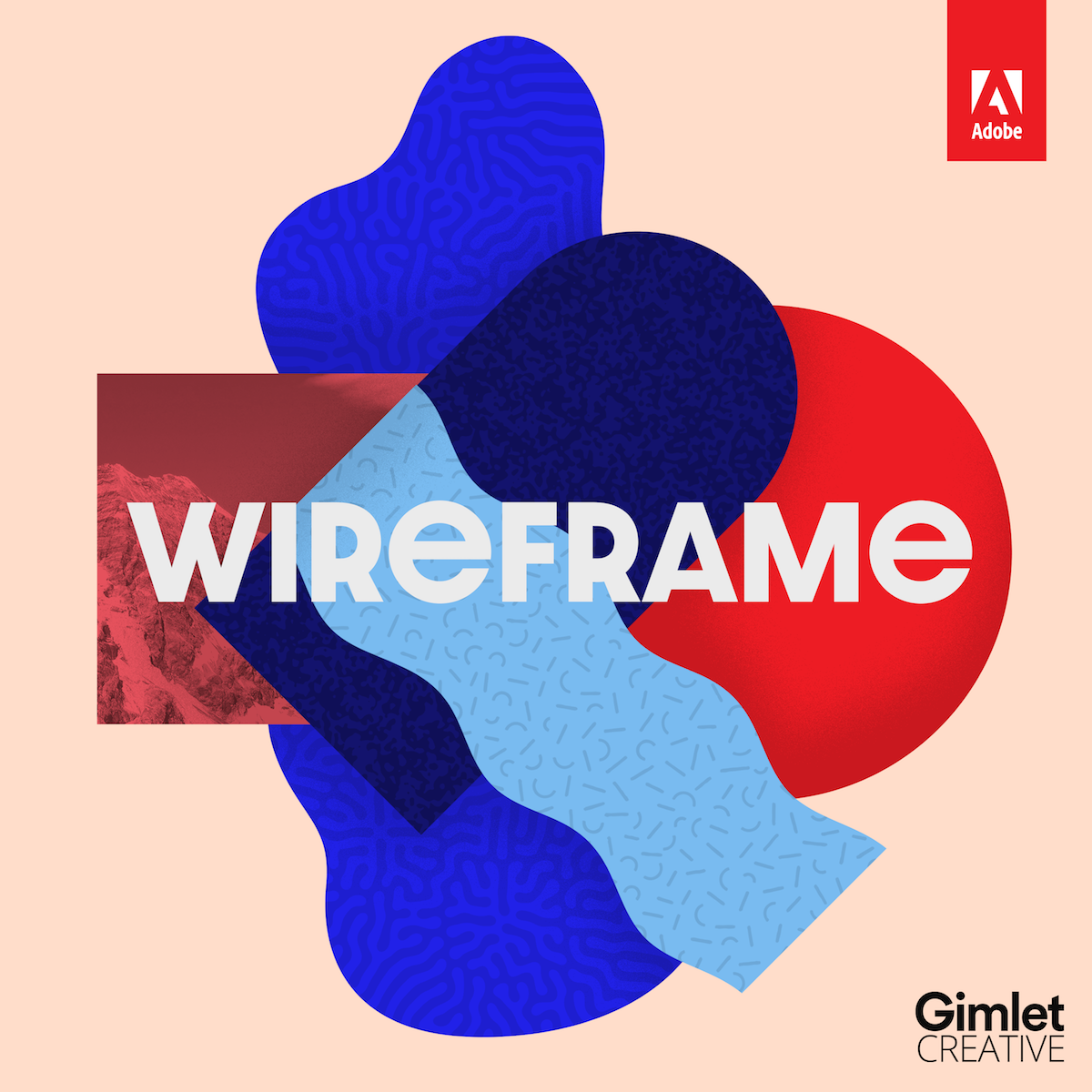
Wireframe: A High-quality Storytelling Podcast about Design
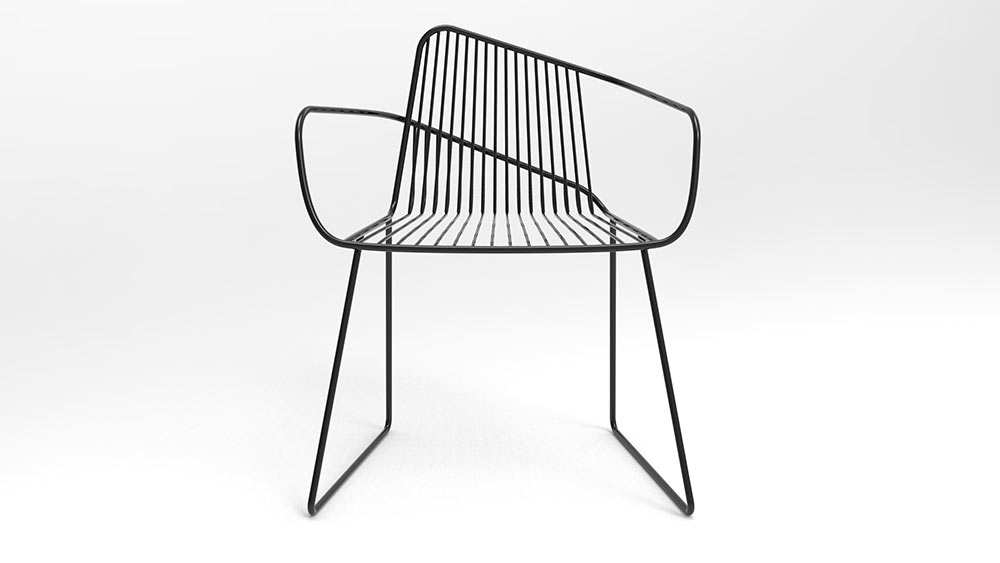
Bright Potato’s ArNO Wireframe Chair Features Expressive Lines

A Guide to Wireframe Tools & Rapid Prototyping

Lo-fi Wireframe Kit for Figma

Website Inspiration: Contra Wireframe Kit
Clean One Pager promoting Vibrant wireframe set by Wijay Verma to help spin up mobile mockup concepts a little quicker. License is CC0 and available in Figma, Sketch, Adobe XD + Invision. Full Review

Wireframe preloader

mochi wireframe

UX Flow - Wireframe Prototyping System

Paper Free Wireframe Kit for Figma

Ultimate Minimal Wireframe Components

Sections - Landing Pages Wireframe Kit

Wild Wireframe Kit for Sketch

Wireframe Kit v2

Free iOS 14 Wireframe UI Kit for Adobe XD

Wireframe Kit - Master Wire

Wireframe vs. Mockup vs. Prototype: What is What?
Digital products do not appear from anywhere; they are well thought out, planned, visualized, and only then assembled into a working version. In this process, the concepts of design wireframe vs mockup vs prototype emerge. They have a similar meaning, so not to confuse them, let’s define what’s what.Design from DribbbleWhat are the Differences Between Wireframe, Mockup, and Prototype?There are several layouts in UX design: wireframe, mockup, and prototype. They show how the future product will look from three points of view — structure, visual concept, and functionality. They are being developed sequentially.If you create a very simple product with the only possible user scenario, such as a landing page, there’s no necessity to produce a prototype. You may limit yourself to just a mockup design or wireframe + mockup. But in other cases, the more complex design goes through all three creation stages.What is Wireframe and How to Сreate it?So, let’s begin with a wireframe. A wireframe is simply a format for displaying information. You may wireframe a user path, one or all existing pages, etc. Moreover, the degree of detail may differ:It is a more detailed plan, with captions explaining what each element means. This wireframe can already be shown to the client, and no additional presentation is needed. For highly detailed wireframes any graphic or vector editor will do (Sketch, Figma, etc).This one may be done even on the first brainstorm with a team by fast sketching. But in this case, no one can figure out what’s what without additional presentation, except the author of the wireframe. For low detail wireframes, paper and a pencil are often enough to sketch.Thus, wireframes are rough outline product structures. It allows you to quickly capture the idea of how everything will be arranged and does not require a lot of time to render. In fact, this is a reference point for the team; a product diagram is a structure, which will then be used to dwell on it.To create a wireframe, all you need to know is the purpose and target audience of the product and its competitors. For simple projects, this will be enough, and for complex projects, you will need a technical assignment with a list of necessary functions.A Service App designWhat is Mockup and How to Create it?The mockups may be presented as static JPG layouts or layouts made using InVision, Sketch Cloud, Figma Preview Mode, or Adobe XD.They are more like a product design concept. In mockups, the emphasis is laid on the visual part: we put on the design onto the approved structure (wireframe). A mockup is needed to support a product design with a client or conduct a focus group to choose the best design option from a range of available.What is a Prototype and How to Create it?A prototype is an interactive model of a product. Prototype vs wireframe vs mockup is clickable. The prototype shows not only what the final product will look like, but also how it will work.When your design concept is ready, all that remains is to link the pages. It may averagely take 1–2 days. Sometimes the mockup stage is skipped and a prototype is made based on detailed wireframes.The Prototypes may be created via Sketch, Figma, Adobe XD, or Invision.When to use Wireframe, Mockup, and Prototype?Before you decide on how to better choose and when wireframe vs prototype vs mockup, mind the following.WireframesWireframes are not a meaningless collection of structured grey boxes, although they look something like. Think of it as the skeleton of your design and remember that wireframes should represent every detail of the final product.The data visualization should be constructed according to aesthetics rules, but greatly simplified. Black, grey, and white are the typical colors you will need (unless you can add blue to indicate specific links)Remember, a well-crafted wireframe displays design in the most accurate way and paves the way for the entire team to pass over to the next designing stage.When used?Wireframes are commonly used as documentation for a project. Since they are a static and fixed way of displaying the interface, they need to be described appropriately, from a brief explanation to complex technical documentation supplement if needed.MockupsKeep in mind that well done mockups are to represent the structure of information, visualize content and demonstrate the basic functionality in statics. They need to encourage people to double-check the visual side of the project.When used?Mockups are especially useful if you want to achieve quick stakeholder approval. Due to their visual nature, mockups are hard refuse due to the low accuracy of execution and at the same time they are much faster to create than prototypes. They are good for getting feedback, and they will help shape a large chapter of the final documentation within the context of an entire design project.PrototypesMind that an average prototype is a simulation of the final interaction between the user and the interface. It may not look exactly what the final product will look like, but it looks a lot like it.When used?Prototypes are used to the fullest in user testing. These usability simulations of the final interaction form the basis for quality usability tests even before development begins.Barber App ConceptTools Used for Wireframe vs. Mockup vs. PrototypeSumming up on the difference between wireframe mockup and prototype, let’s revise the basic tools used to create each of them.For low detail wireframes, paper and a pencil are often enough to sketch. For highly detailed wireframes any graphic or vector editor will do (Sketch, Figma, etc).The mockups may be presented as static JPG layouts or layouts made using InVision, Sketch Cloud, Figma Preview Mode, or Adobe XD.Prototypes may be created via Sketch, Figma, Adobe XD, or Invision. Feel free to add any tool you like to create the same.ConclusionThus, your website design process may demand several stages to accomplish. Each of them are from wireframes to mockups and prototypes accordingly. You may skip the middle one and pass it over to a functionality feature for your future digital product. You need to know the wireframe vs mockup vs prototype difference and the project details.Do not forget to use a great prototyping tool of your choice to help you out with the layouts and work with top product design teams to dive deeper into all designing details to the fullest.Update:Originally published at https://fireart.studio on December 9, 2021.Wireframe vs. Mockup vs. Prototype: What is What? was originally published in Muzli - Design Inspiration on Medium, where people are continuing the conversation by highlighting and responding to this story.
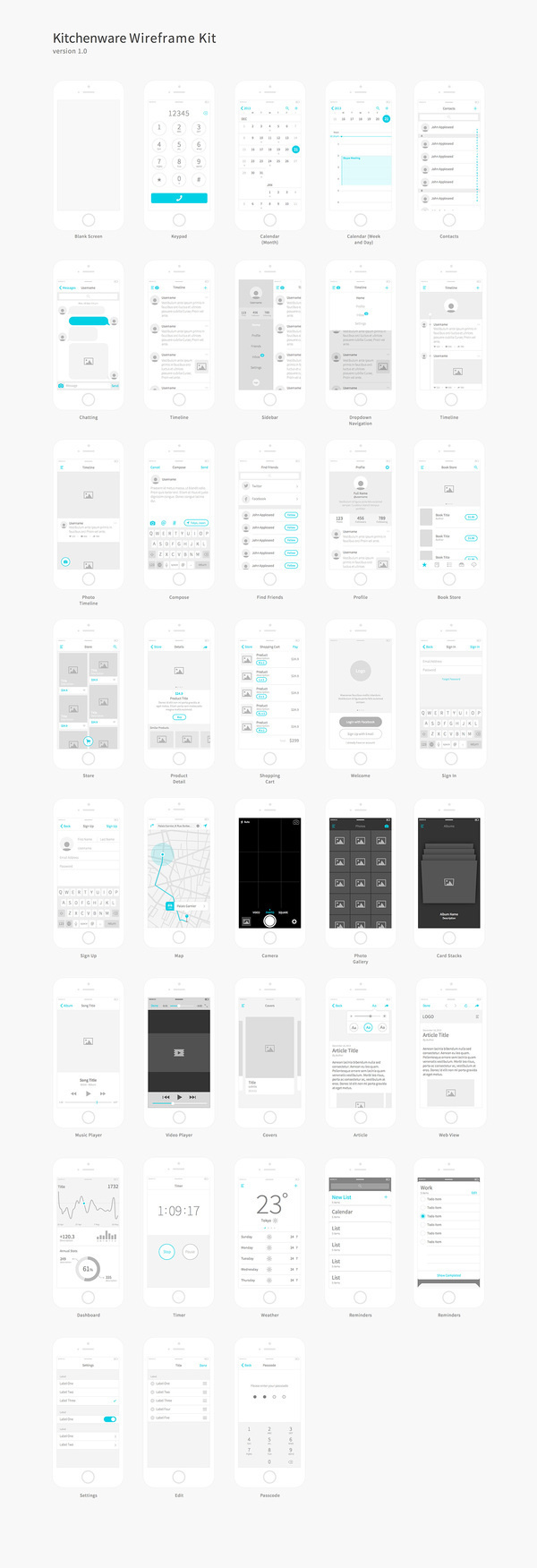
Wireframe kit full preview #wireframe #kit #ui
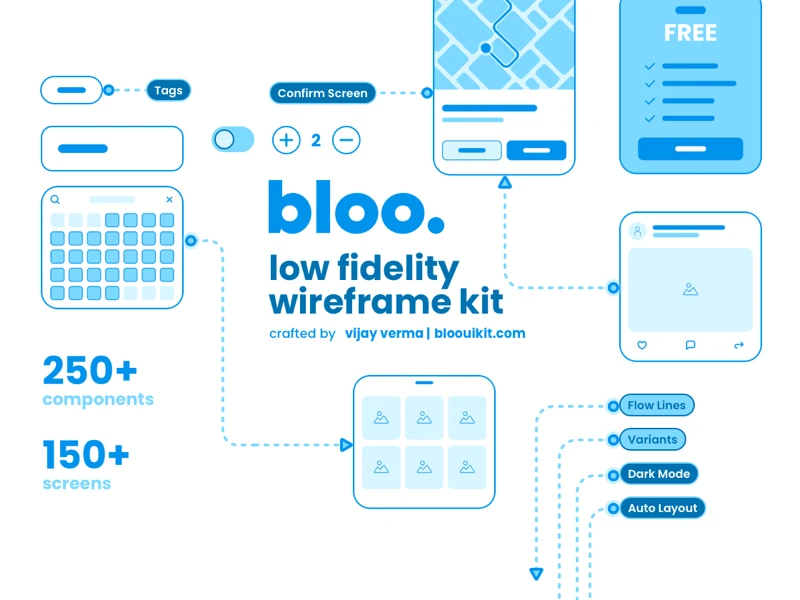
Bloo Free Wireframe UI Kit
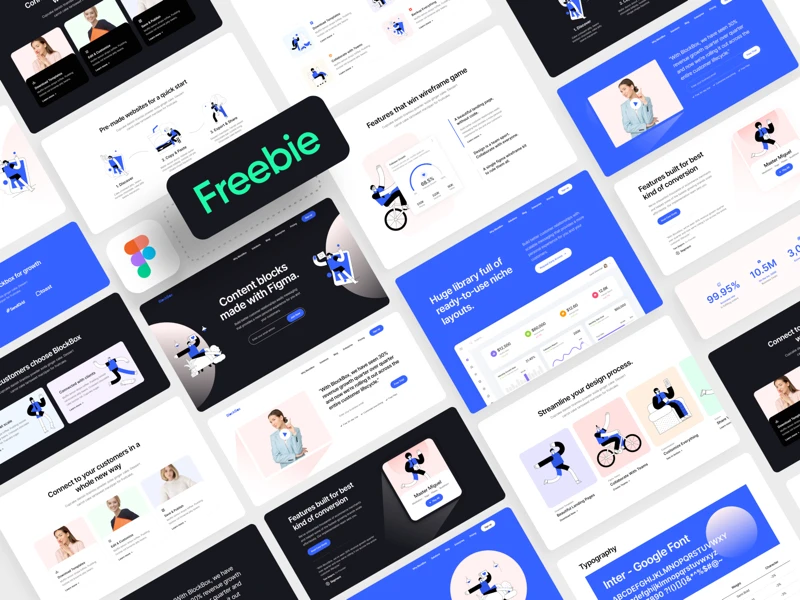
Blockbox Wireframe UI Kit for Figma

Login Page — Seen Wireframe UI Kit

Solid UX & Wireframe Kit

Ironhack Free Wireframe UI Kit for Figma
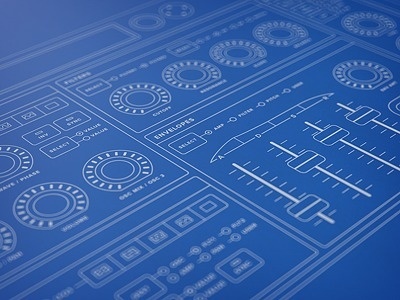
Synth Desktop Hardware Wireframe #interface

30 Wireframe Examples That Will Stir Your Creative Juices
So you’re preparing for your next design project. You did your research, have a few ideas in mind and you’re ready to work your magic. The next step would be creating mockups of the website’s UX to visualize the flow. What is Wireframing and Why Do You Need it? You may think of wireframing as...

Solid UX & Wireframe Kit

Wireframe Icon

Mobile app wireframe ui kit
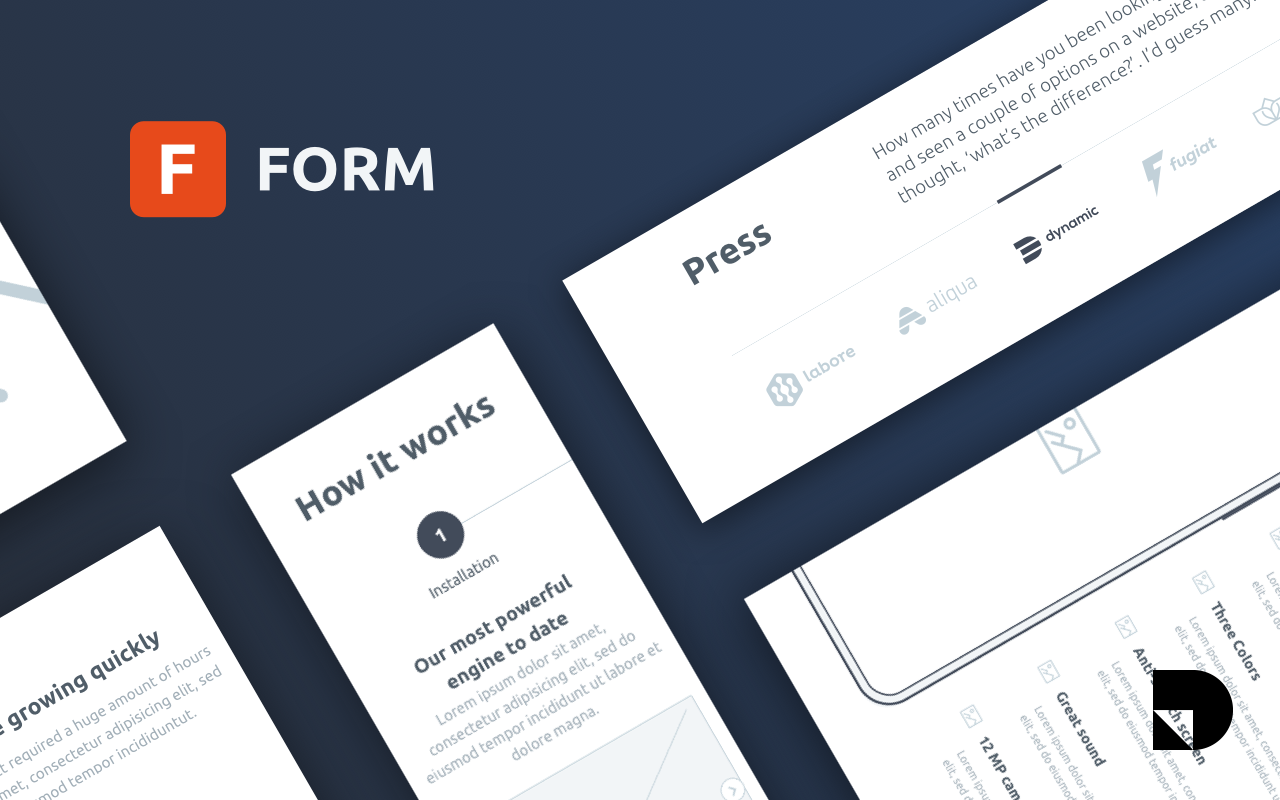
Introducing Form: a free wireframe kit from InVision
Introducing Form: a free wireframe kit from InVision AoiroStudio Oct 03, 2018 Our friends from InVision have launched two things recently! First of all, they are introducing a new design of their blog now called: Inside Design. They are also sharing a free wireframe kit, to celebrate their launch as well, how cool is that?! Introducing Form: a free wireframe kit from InVision, it's 190 templates ready-to-use for your next/current design project. It's integrated with a wide variety of layouts for popular page categories and just to make it even more perfect. It's totally free, get it now. Form is a free wireframe kit for speeding up your design workflow. This free wireframe kit is ideal for creating beautiful, seamless, large-scale design projects, faster. Designers can pull from a massive library of ready-made layouts, components, and symbols, allowing them to focus on what really matters: creating beautiful designs (rather than building repeatable processes from the ground up each time). What's inside: 190 templates 19 categories 200+ UI elements More Links Download your free kit Inside Design A Preview invision freebies wireframe design tools press release

Mobile apps wireframe ui kit

Filllo Web Wireframe UI Kit

iFrame Wireframe Kit

UX Wireframe Kit

Wild Wireframe Kit for Sketch

Landing Page Wireframe #page #wireframe #blueprint #layout #web #landing
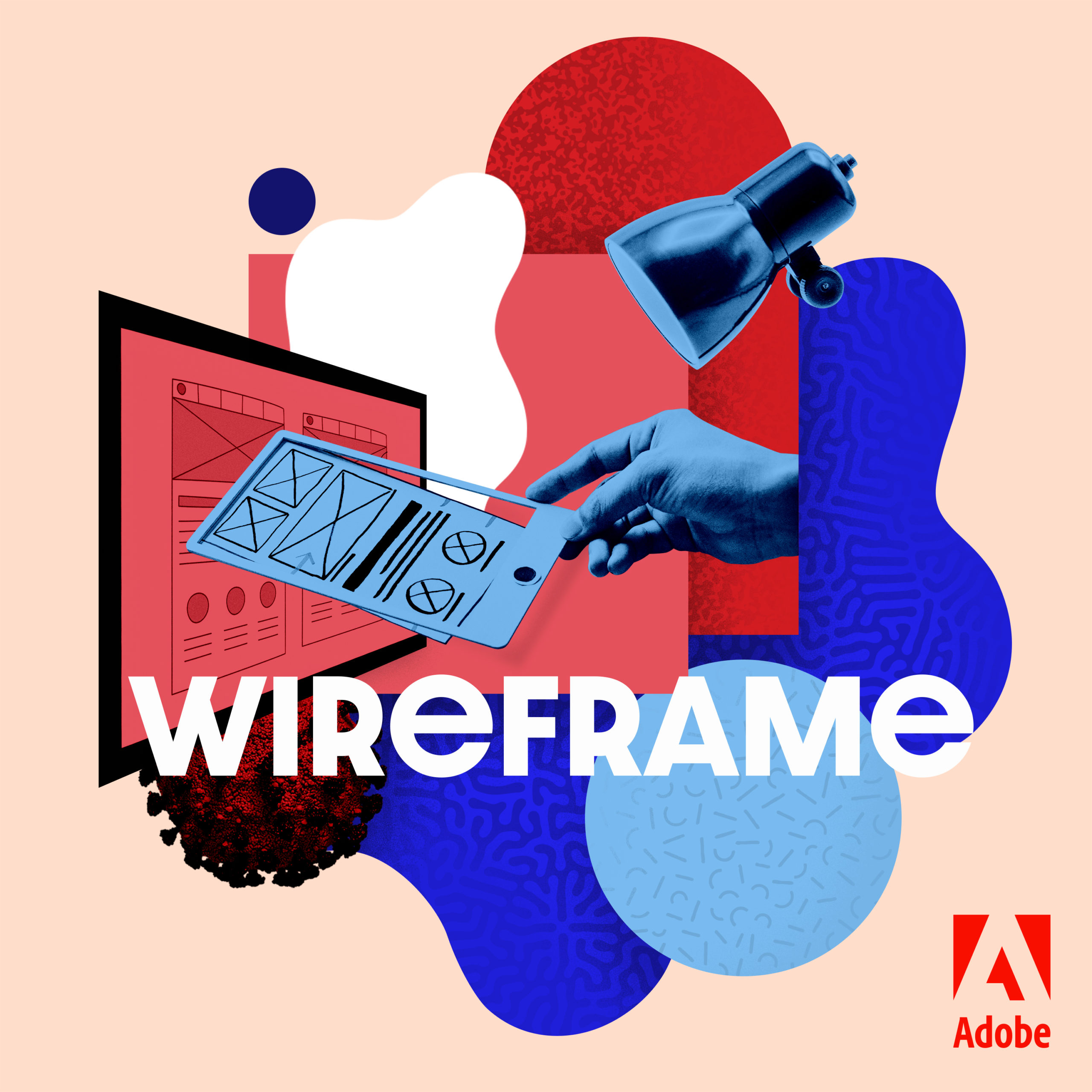
Wireframe S3E1: COVID-19, Social Unrest and Design
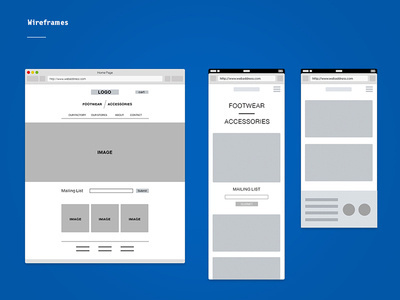
Wireframes #page #wireframe #layout #web #landing

Fashi UX & Wireframe Kit

Flex - Figma Design System & Wireframe Kit

Mobile app wireframe ui kit

Wireframe Builder Kit

Take 5: Refynd Studio’s Speaker Shelf, Wireframe Furniture, Navi Rug, and More
Senior Editor Gregory Han shares his favorite rug, a modular wireframe furniture system that reminds him of the 80s mall, and more.

Desktop Wireframe Kit – 350 unique sections
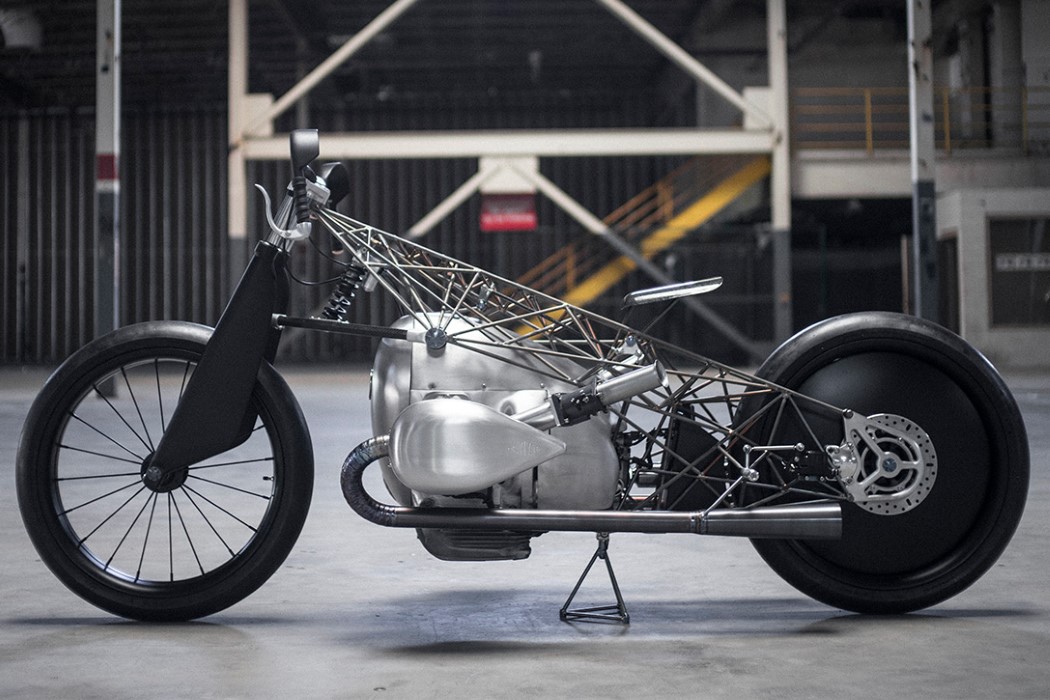
Made to showcase its vintage BMW engine, the ‘Birdcage’ has a wireframe design
Made to showcase its vintage BMW engine, the ‘Birdcage’ has a wireframe designAt first glance, the BMW Motorrad Birdcage looks like a 3D model viewed in wireframe mode. It’s easy to make that mistake, because the Birdcage, sure...

Wireframe for admin dashboard

DOB – Desktop & Mobile Wireframe UI Kit

Optimum Wireframe Desktop

Solid UX & Wireframe Kit

Ra Creative Wireframe Kit

Largest Desktop Wireframe Kit – 700 unique sections

Elliette Wireframe Kit

Nova App Wireframe Kit

Noya - Studio / Agency Website Wireframe
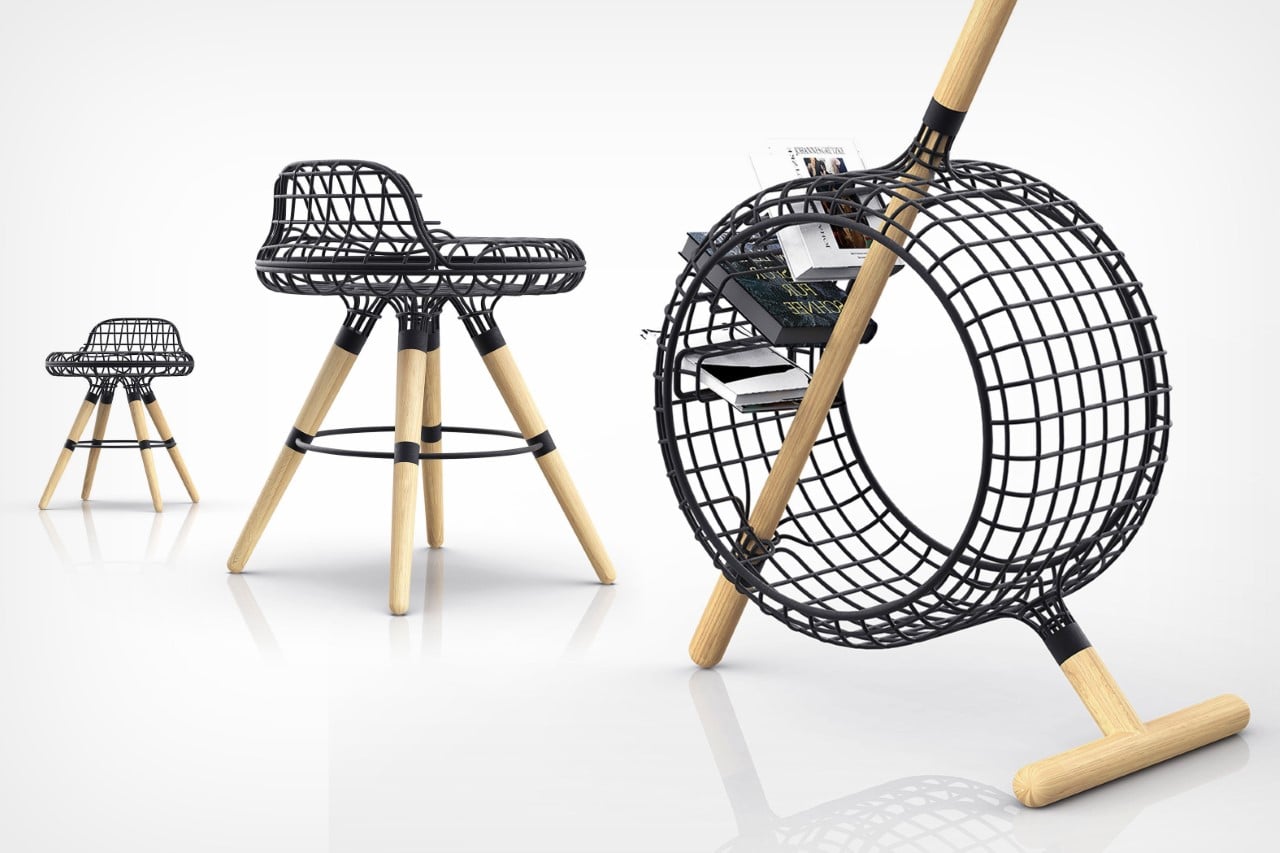
This wireframe-based furniture series adds volume to your interior decor without the weight
This wireframe-based furniture series adds volume to your interior decor without the weightAnyone familiar with 3D modeling will know what a wireframe is. The wireframe forms the basic outer mesh of any 3D object, representing it only...

Hand Draw Wireframe UI Kit for Adobe XD

Uranus v1.3 - Wireframe Kit

Uranus v1.3 - Wireframe Kit
Get access to thousands of freshly updated design inspiration pieces by adding Muzli to your browser.
Loved by 800k designers worldwide, Muzli is the leading go-to browser extension for creative professionals.
The Value of Wireframes in the Product Design Process
Wireframing is an essential phase in the product design journey, acting as the blueprint for the final product. By visualizing the structure, layout, and functionality of a product, wireframes offer a multitude of benefits for both designers and stakeholders. Let's delve into the significant value wireframes bring to the product design process.
Why Wireframes are Crucial:
1. Clarity and Vision Alignment
Wireframes provide a clear visual representation of the product's structure, ensuring that all stakeholders, from designers to clients, are on the same page regarding the product's direction.
2. Cost and Time Efficiency
Identifying and rectifying issues at the wireframing stage can save considerable time and resources. It's quicker and less expensive to make changes to a wireframe than a fully developed product.
3. Focus on Usability
Wireframes prioritize functionality and user experience over aesthetics. This emphasis ensures that the core usability of the product is established before diving into detailed design elements.
4. Facilitates Feedback
Presenting wireframes to stakeholders or potential users can generate valuable feedback early in the design process, paving the way for a product more attuned to user needs and expectations.
5. Serves as a Reference
Developers can use wireframes as a guide during the development phase, ensuring the final product aligns with the initial design vision.
Best Practices in Wireframing:
1. Start with Low-Fidelity
Begin with rough sketches or basic digital layouts to get the primary structure in place, before moving to detailed, high-fidelity wireframes.
2. Keep It Simple
At its core, a wireframe should be clear and devoid of intricate design elements. It's about structure and functionality, not colors or graphics.
3. Use Standard Symbols and Conventions
Utilize universally recognized symbols and conventions to ensure that the wireframe is easily understood by all stakeholders.
4. Collaborate and Iterate
Engage team members and stakeholders early and often. Their feedback can lead to iterative improvements, enhancing the final product's quality.
Conclusion:
Wireframes serve as the foundational blueprint in the product design process. Their value, from ensuring clarity to enhancing usability, underscores their importance in crafting user-centric products. By appreciating the role of wireframes and adhering to best practices, designers can pave the way for successful product outcomes.